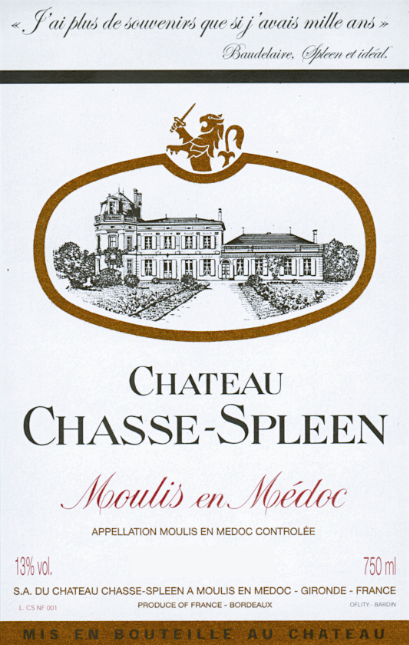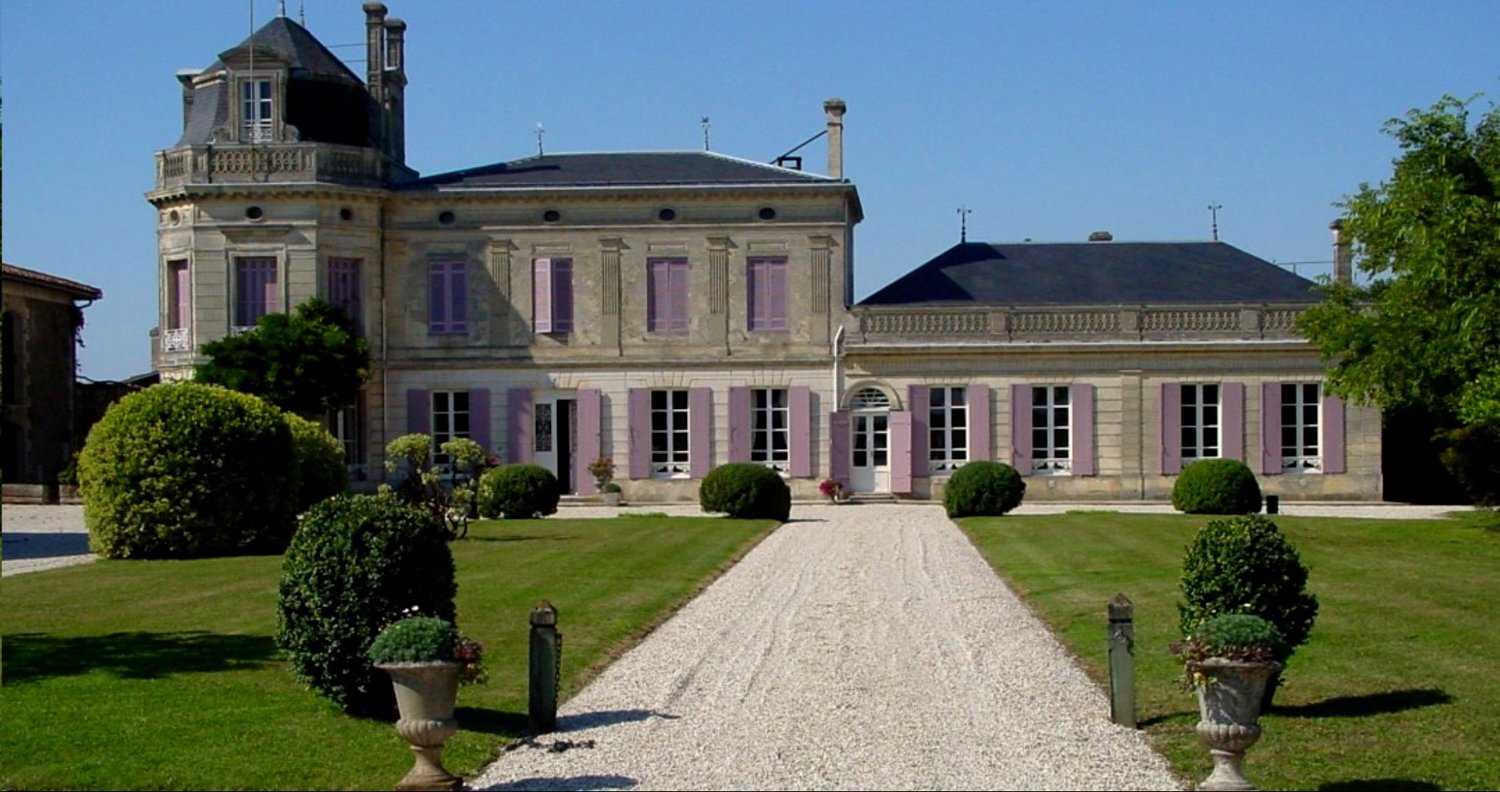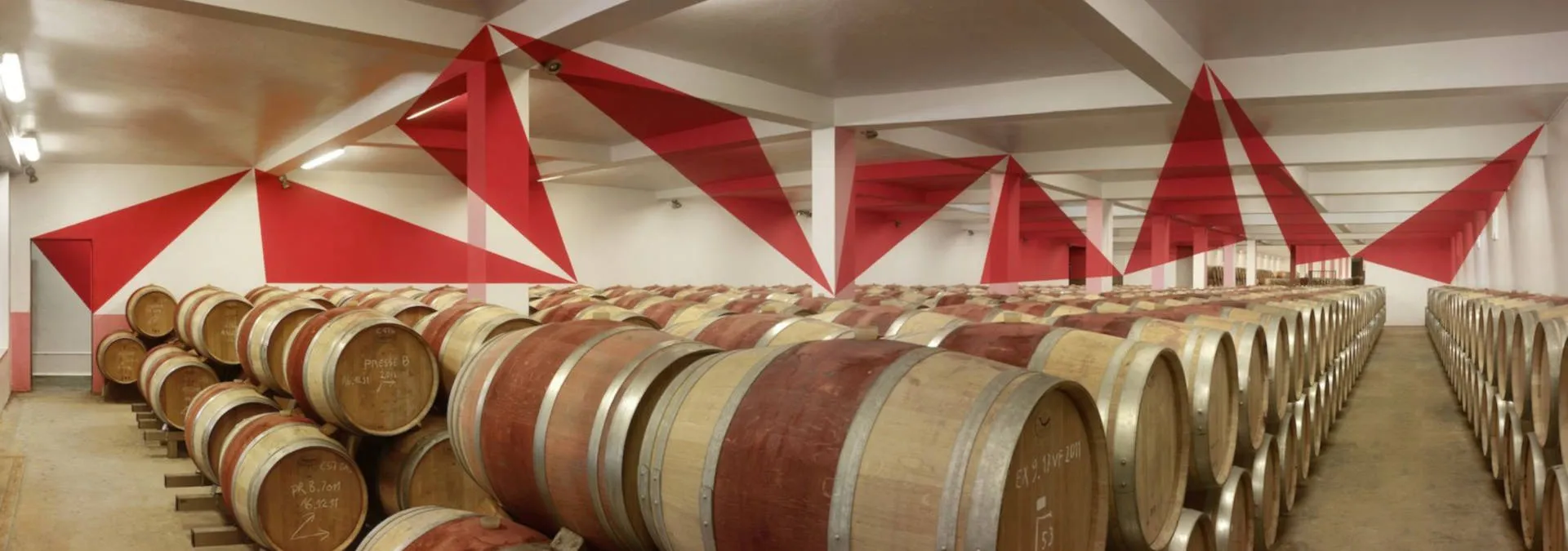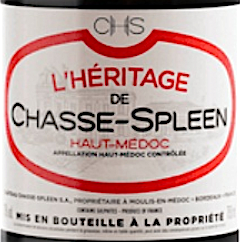
Château Chasse-Spleen
32 Chemin de la Raze
33480 Moulis-en-Médoc
Tél. +33 (0) 5 56 58 02 37
What an evocative and poetic name for a Bordeaux estate. It's hard not to think of the famous poet Charles Baudelaire. But another hypothesis would be Lord Byron (who was visiting France). Finally, the most plausible hypothesis comes from the painter Odilon Redon, illustrator of “Spleen de Paris” and neighbor of the property. He is said to have suggested the name to the estate's owners in 1863, who then named the château Chasse-Spleen. This Cru Bourgeois Exceptionnel has been run by women since 1976. First Bernadette Villars, (daughter of Jacques Merlaut, a great Bordeaux landowner and wine merchant), then taken over by Claire (her eldest daughter) in 1992, before handing over management to her younger sister, Céline Villars-Foubet. Chasse-Spleen is one of the Médoc's great names, producing wines of great intensity, minerality and freshness from its 103 hectares of fine gravelly, clay and limestone plots, resulting in wines of great amiability and suavity.
Why Chasse-Spleen? The origin of the name remains an enigma. Is this Moulis “ Cru Bourgeois Exceptionnel ” in the Moulis appellation the result of the good humor attributed to the British poet Lord Byron, when he visited the Bordeaux region in 1821 on his way to Spain? Or was it the famous writer and poet Charles Baudelaire, who stayed at the château? The mystery remains, and the answer is still undecided, but continues to nourish a certain legend of this cru, whose wines sometimes bring joy, sometimes spleen. More rationally, however, the château's history began in the 18th century. In 1760, the first owner, Sieur Gressier, built the Carthusian monastery (still visible today) at the center of his Grand-Poujeaux estate. He then set about building the winery and its infrastructure, as well as the vineyard.

A little later, in 1822, the estate was split into two distinct parts through successive marriages and inheritances. These two entities are Gressier-Grand-Poujeaux and Grand-Poujeaux Castaing. It was to the second entity that the name Chasse-Spleen was given in 1863 by Rosa Ferrière-Castaing, the widow of the owner. She would go on to make Chasse-Spleen a renowned Médoc wine, a reputation that the château's wines ultimately owe to the influence of women to this day. The Castaing family owned Chasse-Spleen until 1909, when it was sold to a German wine merchant, Segnitz. The latter later sold it in 1920 to the Lahary family, who owned it until 1976, at the height of the Bordeaux wine crisis.
In the 1970s, when the Bordeaux wine industry was going through a profound crisis, the Lahary family decided to sell the château. A leading Bordeaux wine merchant, Jacques Merlaut, bought the property in 1976. The family also owned another Cru Bourgeois , Château Citran in the Médoc, and its flagship, Château Gruaud-Larose in Saint-Julien, Second Grand Cru Classé in 1855. But it was his daughter, Bernadette Villars, who brought Chasse-Spleen to international prominence, a successful involvement sadly cut short by a tragic accident in the 90s. On her death, one of her two daughters, Claire Villars-Lurton (owner of the 5th Grand Cru Classé in 1855, Château Haut-Bages Libéral in Pauillac and Château Ferrière,3rd Grand Cru Classé in 1855 in Margaux) took over the management of the estate until her sister, Céline Villars-Foubet, took over the management of the estate in 2000, alongside her husband, Jean-Pierre Foubet. Céline has since expanded the Chasse-Spleen vineyard, notably by acquiring Château Brillette, another Moulis, in 2022.

Chasse-Spleen is made from the best plots on the Grand-Poujeaux croup. Unfortunately, the cru was not included in the 1855 classification, as it was created later (in 1863). There's no doubt that, like Château Poujeaux, another exceptional Moulis with a “premier terroir” (i.e., worthy of the Grands Crus Classés of 1855), Château Chasse-Spleen would also have deserved to be included in such a classification. In a way, the château will make up for this by being the leader, along with Château Poujeaux, of the Crus Bourgeois du Médoc, since it was included in the 1932 classification as a “Cru Bourgeois Exceptionnel”.
This reputation is far from usurped. Chasse-Spleen boasts an exceptional terroir covering 80 hectares (of the 105-hectare estate). With its four gravelly plots - in fact, Quaternary gravel mixed with Garonne gravel and resting on asteriated limestone (as in the Saint-Emilion vineyards) and clay-limestone soils - Chasse-Spleen is able to produce top-quality grapes on the highest point of the Grand-Poujeaux hilltops. The vines are around 35 years old, enabling the 73% Cabernet Sauvignon, 20% Merlot and 7% Petit Verdot to produce wines of great complexity. Wines whose origin is also a virtuous behavior. In fact, the vineyard is HVE (Haute Valeur Environnementale) certified, reflecting its attention to and commitment to preserving biodiversity and producing and using renewable energy.
It's often said that Moulis wines have the sap of the Pauillacs and Saint-Estèphe, yet resemble nothing more than themselves, a touch rustic. This is partly true of many Moulis wines. But Chasse-Spleen doesn't just borrow this seductive tannic structure. His wines are as elegant and caressing as a Saint-Julien or a Margaux. In fact, isn't its terroir located precisely between Margaux and Saint-Julien? A situation that explains everything. Chasse-Spleen produces powerful, structured, rich wines, but with docile, velvety tannins. His style is as recognizable as in his other wines, including two second wines: L'Oratoire de Chasse-Spleen and l'Ermitage de Chasse-Spleen, which, since the 2001 vintage, has been renamed l'Héritage de Chasse-Spleen.

Its deep, intense color reveals, from the very first olfactory sensations, notes of black fruit (blackcurrant, blackberry) and red fruit (cherry) with a hint of vanilla (the hallmark of barrel ageing). The substance is there, and will digest the non-intrusive oak perfectly. The agitation is more “mineral”, with scents of rubbed flint (very Graves Garonnaises). The grapes from this blend were perfectly ripe at the time of harvest, and the Cabernet Sauvignon dominance works wonders here in this vintage of large Cabernets. On the palate, the wine's uprightness is flawless, with a straightforward attack, a full, greedy mid-palate and a tannic structure that is present but very civilized, not to say silky. A wine that lacks neither ageing potential nor balance and elegance in this obviously successful vintage, embodied in this very well-crafted wine.

One of the estate's second wines, this is invigoratingly fresh and aromatic, with a great frankness of crushed raspberry, burlat cherry and a floral hint of red rose and spice. Elegant and engaging. One might think that the aromas are jammy, but on the contrary, they are pure and fresh, even in this rather sunny vintage. It's worth remembering that the vines at Chasse-Spleen, located in the open country, even without the benefits of direct proximity to the Gironde estuary, which always provides a beneficial micro-climate, are never in a state of suffering thanks to the regular presence of water in the subsoil. As a result, the grapes reach perfect ripeness and do not suffer from over-ripeness. On the palate, the wine is balanced with a certain tension. The tannic structure is velvety. The finish is greedy and fruity (a lovely burst of fruit), with a very appreciable length. A second wine as one would like to see often.
1928-1929-1945-1947-1949-1953-1955-1959-1961-1970-1975-1981-1982-1985-1986-1988-1989-1990-1996-2000-2001-2003-2005-2009-2010-2015-2016-2018-2019-2020-2022-2023

Website under construction
Available Soon